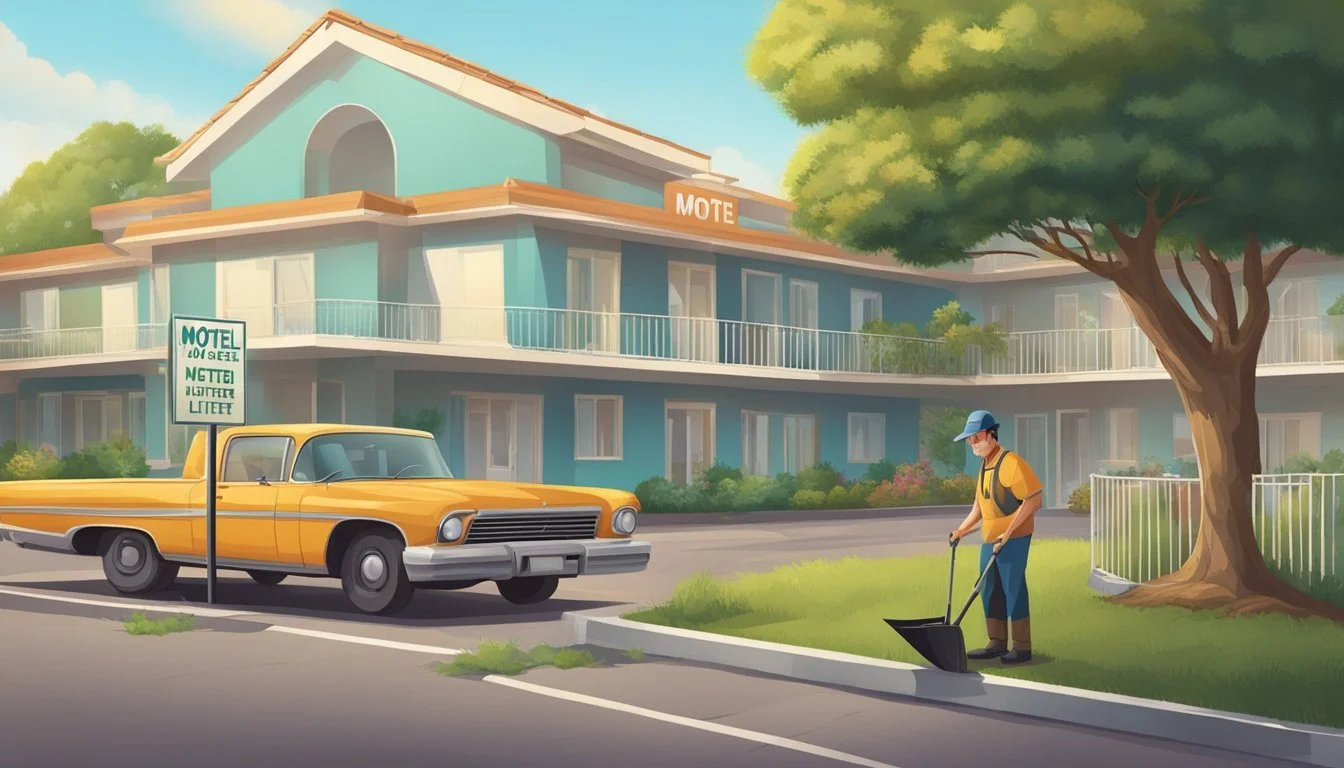Cary Stayner: 5 Seemingly Safe Jobs That Allowed the Yosemite Killer to Strike
The Unseen Danger in Everyday Occupations
Cary Stayner, known as the Yosemite Killer, shocked the nation with his brutal crimes in 1999. His case highlights how seemingly ordinary jobs can provide opportunities for predators to access victims. Stayner's employment as a handyman at a motel near Yosemite National Park allowed him to exploit his position and commit heinous acts.
The Yosemite murders serve as a stark reminder that danger can lurk in unexpected places. This article examines five occupations that, like Stayner's, appear safe on the surface but have the potential to be exploited by individuals with malicious intent. By understanding these risks, we can better protect ourselves and others from potential harm.
1) Room Attendant at Cedar Lodge
Cary Stayner's position as a room attendant at Cedar Lodge provided him with an unsettling level of access to potential victims. The lodge, located near Yosemite National Park, was a popular destination for tourists exploring the area.
As a room attendant, Stayner had keys to guest rooms and intimate knowledge of the property's layout. This allowed him to move about unnoticed and enter rooms under the guise of maintenance or cleaning duties.
Stayner used his role to gain the trust of guests staying at Cedar Lodge. He could easily approach rooms without arousing suspicion, as visitors expected to see staff members in the hallways and near their accommodations.
The job's flexible hours and solitary nature meant Stayner could observe guests' routines and movements. He could identify when rooms were occupied and when guests were likely to return.
This position ultimately enabled Stayner to carry out his crimes against Carole Sund, Juli Sund, and Silvina Pelosso in February 1999. His familiarity with the lodge and its operations played a crucial role in his ability to target and access his victims.
2) Groundskeeper at Motel 6
Cary Stayner's employment as a groundskeeper at Motel 6 provided him with another seemingly innocuous job that masked his sinister intentions. This position allowed him access to various areas of the property, including guest rooms and outdoor spaces.
As a groundskeeper, Stayner was responsible for maintaining the motel's grounds, performing basic repairs, and ensuring the overall cleanliness of the property. These duties gave him ample opportunities to observe guests and their routines without arousing suspicion.
The role also provided Stayner with a legitimate reason to be present in different areas of the motel at various times of day. This access allowed him to familiarize himself with the layout of the property and potential escape routes.
Stayner's job as a groundskeeper at Motel 6 demonstrated how seemingly safe and common occupations could be exploited by individuals with criminal intentions. His position granted him a level of trust and freedom of movement that he later used to carry out his crimes.
3) Handyman for Vacation Rentals
Cary Stayner's position as a handyman for vacation rentals provided him with troubling access to unsuspecting victims. He worked at Cedar Lodge, located just outside Yosemite National Park, where he performed maintenance duties.
This job allowed Stayner to move freely around the property and enter guests' rooms under the guise of repairs or routine upkeep. He could observe visitors' routines and identify potential targets without arousing suspicion.
Vacation rental handymen often work irregular hours, giving Stayner opportunities to be present at times when guests might be more vulnerable. The transient nature of vacation properties also meant new potential victims were constantly cycling through.
Stayner's role likely fostered a sense of trust among guests, who may have viewed him as a helpful employee rather than a threat. This false sense of security made it easier for him to approach and interact with visitors.
The job provided Stayner with knowledge of the property layout and surrounding areas, which he could use to plan and execute his crimes. His familiarity with the region also aided in concealing evidence afterward.
4) Maintenance Worker in National Parks
Cary Stayner's position as a maintenance worker at Cedar Lodge near Yosemite National Park provided him with a seemingly innocuous job that allowed him to blend in with the environment. This role gave Stayner access to various areas of the lodge and surrounding wilderness.
As a maintenance worker, Stayner could move about the property without raising suspicion. He had legitimate reasons to be in different locations at various times, making it easier for him to observe potential victims.
The job also allowed Stayner to become familiar with the layout of the lodge and surrounding areas. This knowledge likely aided him in planning and executing his crimes without detection.
National parks and nearby accommodations often employ maintenance workers to keep facilities running smoothly for visitors. These positions typically require minimal background checks, potentially allowing individuals with criminal intentions to gain employment.
Stayner's job provided him with a cover of normalcy, making it difficult for others to suspect his true motives. His familiarity with the area and unrestricted access to various locations ultimately contributed to his ability to carry out his crimes undetected for several months.
5) Night Security at Budget Inns
Night security positions at budget inns provided Cary Stayner with another opportunity to exploit vulnerable situations. These roles often involve patrolling quiet premises during late hours when few people are around.
Security guards at low-cost motels may work alone, with minimal supervision or interaction with others. This solitary nature of the job can appeal to those with nefarious intentions.
Budget inns frequently attract travelers seeking affordable overnight stays. Many guests are unfamiliar with the area and may let their guard down, potentially making them easier targets.
The position grants access to guest information and room keys. A night security guard could misuse this privileged information to identify and locate potential victims.
Irregular sleep schedules associated with night shifts can lead to isolation from normal social circles. This separation may have further enabled Stayner to conceal his criminal activities.
While most night security personnel perform their duties responsibly, the Stayner case highlights how such roles could be misused by a predator seeking access to vulnerable individuals.
Background of Cary Stayner
Cary Stayner's life was marked by family tragedy and a seemingly ordinary existence before he committed his shocking crimes. His upbringing and early adulthood provide insight into the factors that may have influenced his later actions.
Early Life and Family
Cary Stayner was born on August 13, 1961, in Merced, California. He was the eldest of five children in the Stayner family. His parents were Delbert Foy and Kay Stayner. Cary had three sisters and a younger brother named Steven Gregory Stayner.
The Stayner family experienced a devastating event on December 4, 1972, when 7-year-old Steven was abducted by child molester Kenneth Parnell. Steven was held captive for seven years, 38 miles away in Mariposa County and later in Mendocino County.
This traumatic incident deeply affected the Stayner family and likely had a significant impact on Cary's psychological development during his formative years.
Previous Criminal Activities
Prior to the Yosemite murders in 1999, Cary Stayner had no known criminal record. He led a seemingly unremarkable life, overshadowed by his brother's kidnapping and eventual return.
Stayner's lack of prior criminal activities made him an unlikely suspect in the Yosemite murders. This allowed him to blend in and avoid suspicion for a considerable time.
In July 1999, FBI investigators located Stayner at a nudist colony. It was during this encounter that he confessed to the murders, revealing the extent of his criminal actions for the first time.
The Yosemite Murders
Cary Stayner's killing spree in Yosemite National Park shocked the nation in 1999. His crimes targeted four women, leaving a trail of devastation and fear in the idyllic natural setting.
Chronology of Events
On February 15, 1999, Carole Sund, her daughter Juli, and family friend Silvina Pelosso vanished from Cedar Lodge near Yosemite. Their disappearance sparked a massive search operation.
Weeks later, on March 19, investigators found Carole and Silvina's bodies in a burnt-out car. Juli's remains were discovered separately on March 25.
The killings resumed on July 21. Park naturalist Joie Armstrong was found decapitated near her home in Yosemite.
Stayner was arrested on July 24 after attempting to check into a nudist resort. He quickly confessed to all four murders.
Victims and Their Stories
Carole Sund (42), Juli Sund (15), and Silvina Pelosso (16) were on a sightseeing trip when they encountered Stayner. He gained access to their room by posing as a maintenance worker.
Carole was a loving mother and active community member. Juli, her daughter, was a high school student with a bright future. Silvina, an Argentine exchange student, was visiting the Sunds.
Joie Armstrong (26) worked as a naturalist in Yosemite. She was passionate about environmental education and loved sharing the park's beauty with visitors.
These women's lives were tragically cut short, leaving their families and communities devastated. Their stories serve as a stark reminder of the impact of Stayner's crimes.







